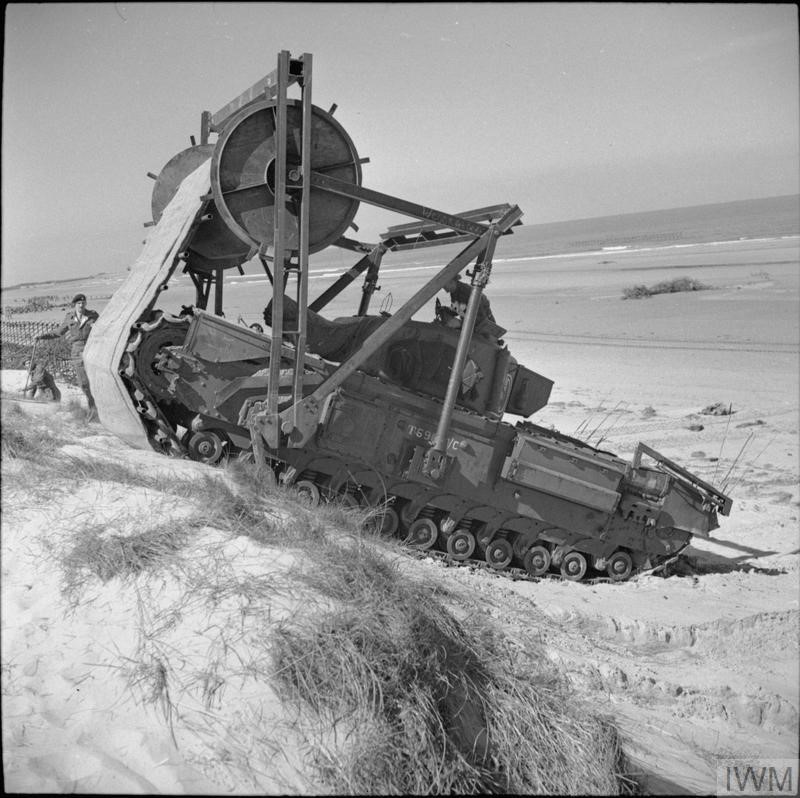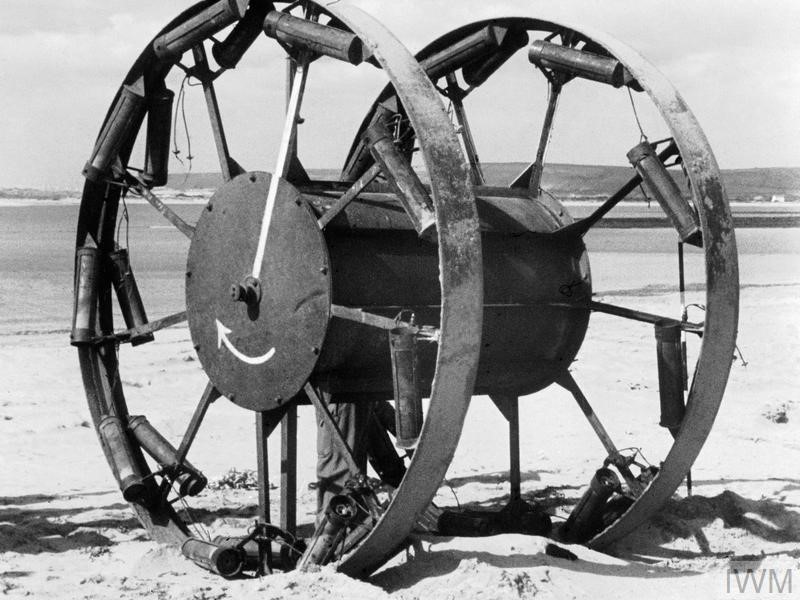British Training at Northam Burrows
As the War in Europe progressed, thoughts turned from defence to attack and by 1943 the British in conjunction with their new Allies, agreed to open up a second front in Europe. The area chosen for this attack was the Normandy Peninsula in France and a number of beaches were chosen for invasion.

The Hobart Funnies
The planned D-Day invasion was the first time in history that a large seaborne invasion was to be attempted on a heavily fortified coastline. Since adopting a defensive strategy in the west in 1941, the Germans had attempted to fortify the French coast, to deter re-invasion of the continent from Britain. The so-called Atlantic Wall was constructed along the entire French Atlantic coast and although never fully completed, it provided a formidable obstacle for an invading army. It was clear that new and innovative weapons would be required to breach these defences.
During the war a series of modified tanks were constructed to train the army in invading the continent of Europe. Many of these tanks were tested on the beaches of Westward Ho! to be ready for D Day. To assist in this work Prime Minister Winston Churchill turned to an eccentric Major General called Percy Hobart. Hobart was tasked with the job of equipping and training a secret armoured division (which laster became the 79th Armoured Division) which would go on to storm the beaches of Normandy and other major river crossings in Europe.
These medium tanks of both American (Sherman) and British (Cromwell and Valentine) design were modified and would be referred to as the “Hobart Funnies”.
These tank designs included the “Crocodile” a Flame throwing tank, the Pattard Mortar tank and other “AVRE” (Armoured Vehicle Royal Engineer) tanks designed to attack German heavy defensive fortifications these included; the “Bobbin” which rolled out a 10 foot wide canvas mat to overcome soft or difficult ground and the “Fascine” that placed bundles of wooden poles to overcome anti-tank ditches to overcome obstacles; the “Crab” a modified tank with a flail on the front, designed to clear minefields; as well as the DD (Duplex Drive) amphibious tank, which could be launched in water.
About 600 metres towards Westward Ho! a metal Baily Bridge was constructed to allow vehicles to easily traverse the pebble ridge and practice on the beach and this became a major landmark which was only removed in 1962. It is known that the Americans practiced here as well and the original road to the Bailly Bridge is still referred to as the American Road.

The Great Panjandrum
The Great Panjandrum, was one of a number of highly experimental projects developed by the Directorate of Miscellaneous Weapons Development (DMWD) in 1944.
The panjandrum was a massive, rocket-propelled, explosive-laden cart that resembled a huge cotton reel, which was capable of penetrating concrete defences that made up part of the Atlantic Wall. A prototype constructed in East London was transported by night to Westward Ho! but plenty of holidaymakers witnessed the test so the weapon was hardly a secret. The trials were not a success and the project was scrapped, although it has also been claimed that the entire project was a hoax devised to convince the Germans that plans were being developed to attack the heavily fortified defences surrounding the Pas-de-Calais rather than the less-defended Normandy coastline.
Amphibious military testing continues to this day at nearby Instow and on the other side of the River Taw is the Arromanches Camp operated by the Royal Marines. The geographical conditions in the Taw Torridge Estuary are ideal for training in using amphibious landing craft.
Download a free guided walk leaflet detailing how Northam Burrows played a role in WW II here
To find out about Northam Burrows RAF click here

